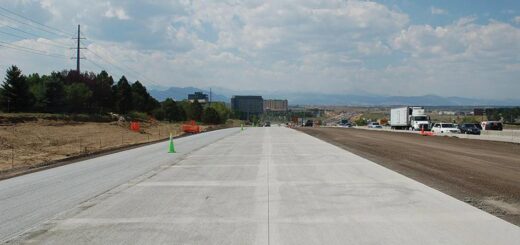What Is Flexible Pavement: A Comprehensive Guide
Flexible pavement is a widely used type of road construction that offers several advantages over other pavement types. In this article, we will delve into the concept of flexible pavement, its composition, construction process, and benefits. Whether you’re a civil engineer, a transportation enthusiast, or simply curious about the infrastructure that supports our daily commutes, this guide will provide you with valuable insights into the world of flexible pavement.
Flexible pavement refers to a type of road construction that comprises multiple layers of materials designed to provide strength, durability, and flexibility.
This type of pavement is commonly used for highways, roads, parking lots, and other transportation infrastructure projects. Unlike rigid pavement, which uses concrete as the primary material, flexible pavements utilize bituminous (asphalt) materials.
Components of Flexible Pavement
- Subgrade
The subgrade is the native soil or improved layer upon which the pavement structure is built.
It serves as the foundation for the entire pavement system and provides support to the upper layers.
The subgrade must have sufficient strength and stability to withstand the loads imposed by traffic.
- Subbase
The subbase layer is located above the subgrade and acts as a transition between the subgrade and the base course.
It helps distribute the load uniformly and provides additional support to the pavement structure.
Common materials used for subbase include crushed stone, gravel, or recycled materials.
- Base Course
The base course is the layer above the subbase and plays a crucial role in distributing the traffic loads to the underlying layers.
It enhances the structural capacity of the pavement and helps prevent the deformation of the surface course.
The base course is typically constructed using a combination of aggregates, such as crushed stone, and bituminous materials.
- Surface Course
The surface course is the topmost layer of the flexible pavement and is directly exposed to traffic and environmental factors.
It provides a smooth riding surface, improves skid resistance, and protects the underlying layers from moisture and wear.
The surface course consists of a bituminous mixture that is carefully designed to meet specific performance requirements.
Advantages of Flexible Pavement
Flexible pavement offers several advantages that make it a preferred choice for various road construction projects. Further, it is more popular compared to the rigid pavements. Some key benefits include:
- Cost-effectiveness
Flexible pavement construction is generally more cost-effective compared to rigid pavement, making it suitable for projects with budget constraints.
Use of the readily available materials and simplicity of the construction process has made it more efficient construction method.
The availability of bituminous materials and the ease of construction contribute to its cost advantages.
- Durability
Flexible pavement can withstand heavy traffic loads and is designed to distribute these loads uniformly. Its flexible nature allows it to withstand dynamic forces, preventing cracks and other forms of distress.
- Smooth Ride Quality
The layered structure of flexible pavement, combined with its flexibility, offers a smooth riding experience for vehicles. This improves driving comfort and reduces driver fatigue, especially during long journeys.
This is the one of the most versatile advantages of these types of pavements.
- Easy Maintenance and Repairs
Flexible pavements allow for relatively easy maintenance and repairs. Individual sections of the pavement can be repaired or replaced without disrupting the entire road.
This reduces maintenance costs and minimizes traffic disruptions.
Factors Affecting Flexible Pavement Performance
Several factors influence the performance and longevity of flexible pavements. It is important to consider these factors during the design and construction process. The key factors include:
- Traffic Loads
The magnitude and frequency of traffic loads significantly impact the performance of flexible pavement. The pavement design must consider the anticipated traffic volume and axle loads to ensure structural integrity.
In adequate thickness, poor material performance, etc. could affect to the lifetime of the payment.
- Climate and Weather Conditions
Climate and weather conditions, including temperature variations, rainfall, and freeze-thaw cycles, can affect the performance of flexible pavement.
Proper material selection and construction techniques should account for the local climate.
In addition, the ground water table and its variations could also make significant impact on the lifetime of the road.
- Material Properties
The properties of the materials used in flexible pavement, such as aggregate characteristics and bitumen quality, influence its strength, durability, and resistance to distress.
High-quality materials are essential for long-lasting performance. Required testing as stipulated in the relevant standards shall be done.
Testing of aggregates, testing of the compaction of the sub-based and sub grade, testing of the strength parameters of asphalt, etc. shall be done before and during the construction as applicable.
- Construction Techniques
The construction techniques employed during the installation of flexible pavement play a crucial role in its performance.
Proper compaction, adequate layer thickness, and accurate alignment are vital for achieving the desired structural integrity.
Comparison with Other Pavement Types
Rigid Pavement
Rigid pavement, commonly made of concrete, has a different structural design compared to flexible pavement.
While rigid pavement offers greater durability and resistance to deformation, it is typically more expensive and requires more intensive construction techniques.
Composite Pavement
Composite pavement combines the benefits of both flexible and rigid pavement.
It utilizes a combination of materials and layering techniques to provide enhanced performance and durability.
Composite pavement is often used in areas with heavy traffic loads or where specific design requirements must be met.
Flexible pavement is a versatile and cost-effective solution for road construction projects. Its layered structure and flexibility provide durability, smooth ride quality, and ease of maintenance.
By considering various factors such as traffic loads, climate conditions, and construction techniques, engineers can design and construct flexible pavements that ensure long-lasting performance.
Moreover, sustainable practices like recycling and energy efficiency contribute to the environmental benefits of this pavement type.




